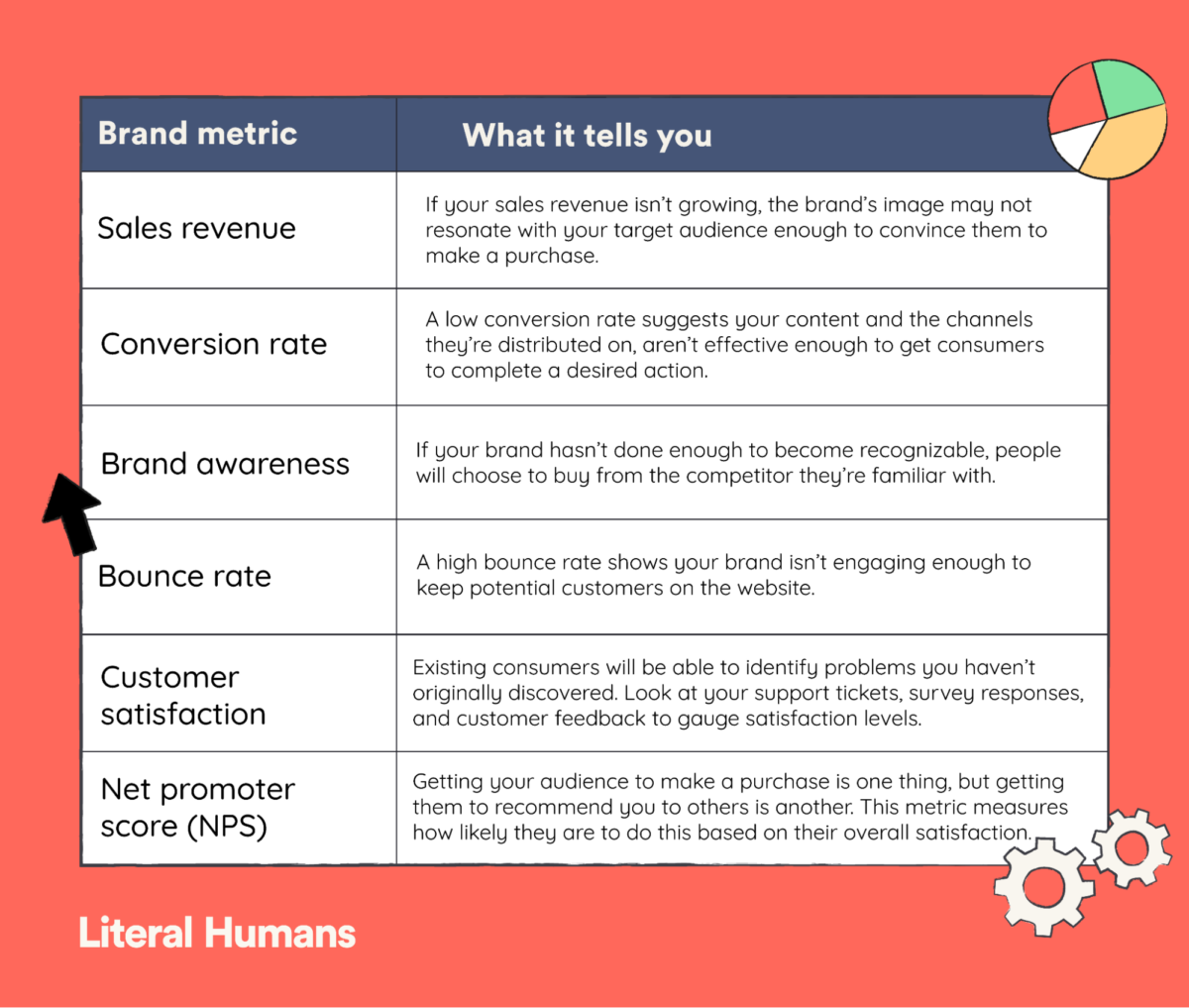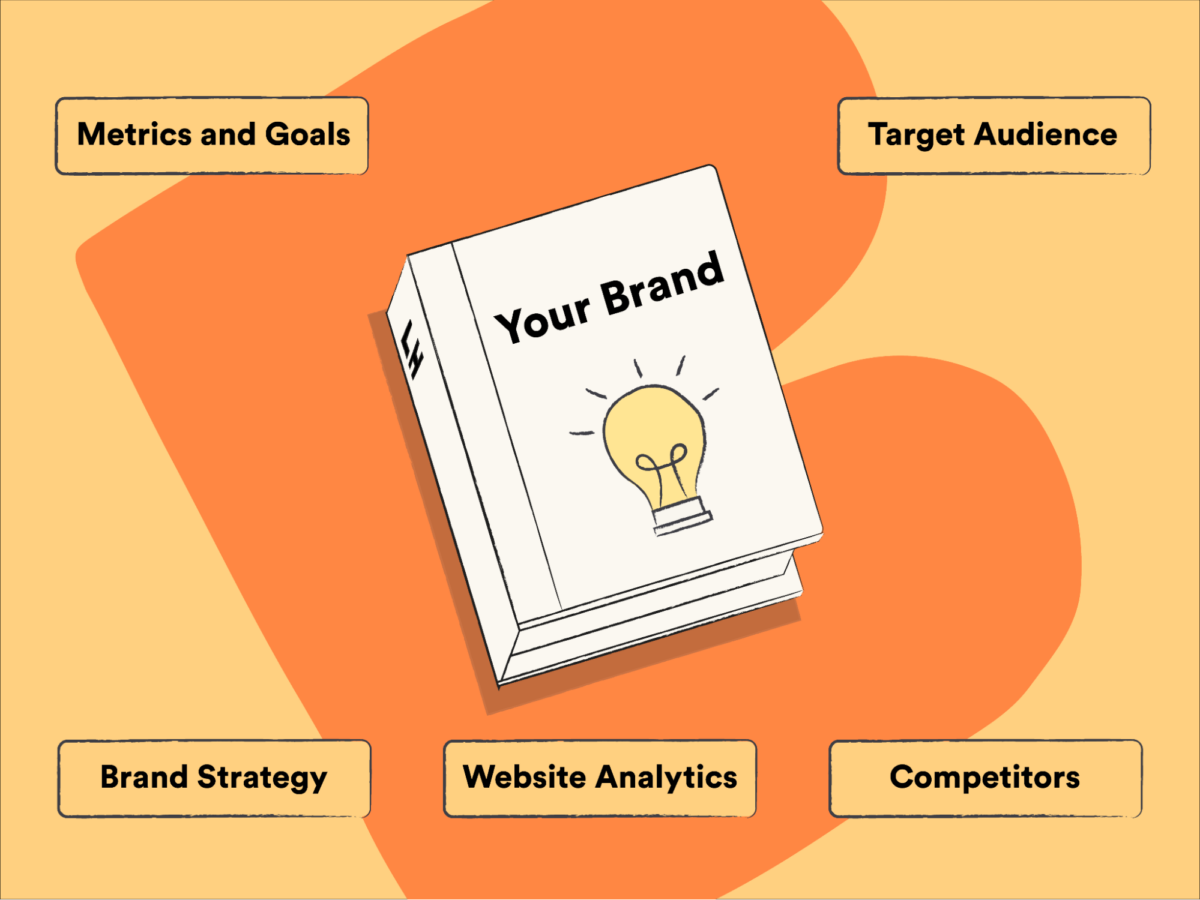Your business’s brand is a precious thing. It’s a signature stamp; a trademark; the image that appears in people’s minds when they think of you. So it’s vital to keep your branding on top form at all times.
How do you do that, I hear you ask?
A brand audit is an excellent place to start. In this article, we’ll lead you through a step-by-step guide to help you on your way to success. This will help you identify what needs improvement , and exciting new areas you can expand into.

What is a brand audit?
Firstly, we need to look at what a brand audit actually is. One of our previous articles is there if you want to dive deeper into the details, so let’s quickly run through the basics.
An audit looks at your brand’s positioning in the marketplace, its visibility, and any weak points it may have. There are three main branding elements that you can look at in an audit:
- Internal branding: Here, you’ll look at the inner workings of your business, including your company culture, core values, and the treatment of employees.
- External branding: This is about your outward-facing brand management, how you message your product to target customers, your visual identity, and how you increase brand awareness through your social media presence.
- Customer experience: The third component concerns how you treat customers and the level of support you provide them.
When you audit your brand, you’ll look through all of these areas meticulously to ensure everything is the best it can be. It’s important to keep an eye on all of them, or else you could find your position in the market slipping when competitors overtake you.
How to conduct a successful brand audit
A brand audit process doesn’t have to be difficult, but you need to be thorough to get accurate results. If you’re unsure about conducting one yourself, it’s a good idea to bring in professionals who know what they’re doing.
Whether you’re going it alone or require extra help, you’ll need to know the steps that form your action plan. So let’s look at what should be done to make your audit as thorough and beneficial as possible.
1. Know your target audience
No matter how many times you’ve heard it before, we have to stress the importance of understanding your audience. Your brand audit should evaluate your ability to target the right people and deliver a good customer experience (CX), which is crucial to success.

Creating a buyer persona will help you get into the mind of the consumer. This is a fictional representation of them based on data-driven research and generalizations. Here is a list of what to include, but we’d suggest getting as detailed as possible:
- Hobbies
- Pain points
- Buying habits
- Preferred method for communication
- Demographics
- Personality traits
It’s important to take what you’ve learned about your customers and apply it to your marketing plan and future strategies. This way, you can align your messaging, value proposition, and tone of voice perfectly with those on the receiving end.
Knowing their specific needs and preferences enables you to make customer-centric decisions. The goal here isn’t to make a sale but to build brand loyalty and stronger relationships. This is where your business will really thrive and grow.
2. Set out your metrics and goals
Every business wants something. If you don’t have a goal in mind, then there’s nothing getting you out of bed in the morning.
Knowing what to strive for means we can determine how close we are to achieving it. From this, it’s possible to establish a clear plan for your team to follow so your employees, stakeholders, and anyone else who works internally with the brand are on the same page.
However, metrics will do more than track your current brand performance. They will also measure the effectiveness of actions you take after your audit so improvement is continuous and proactive.
For these reasons, you’ll want to create a list of metrics to review. Below you’ll find some closely linked with branding, making them the best place to start.

Remember these should be checked on the regular. Weekly monitoring allows you to act quickly and ensure every change you make has a positive impact.
3. Review your overall brand strategy
A brand strategy is the foundation of success. It’s a framework that outlines how you will advertise yourself to customers. The main aim is to put yourself front and center in your target market to draw attention away from competitors.
However, changing customer demands and business landscapes makes this a difficult task. If you don’t regularly review your current strategy, you could lose all sense of direction and focus. Which is why this is the next step in the auditing process.
To stay competitive and relevant, you need a strong strategy. But how can you tell if you’re getting it right? If it aligns with your goals, target audience, and brand values, you’re heading in the right direction.
If you’re unsure, try asking yourself these questions:
- Are you targeting the right demographics?
- Have you been addressing your customer’s pain points?
- Are your values clear in your actions?
- What are your customers expecting from you?
- What do your employees think your business is for?
- Can you define your brand messaging?
- Do your fonts, logo, typography, and colors suit your brand personality?
- Do you work well with other brands or directly compete with them?
The best practice is to pair this with a more comprehensive approach. For this, we’d suggest conducting a SWOT analysis as it identifies your brand’s strengths, weaknesses, opportunities, and threats.
Use your answers to the questions above and the template below as a guide.

Once you’ve had a look, see if you can answer these questions:
- Is your search engine optimization (SEO) succeeding?
- Which marketing materials work best for your brand?
- Are you hitting all of your customer’s touchpoints?
- Is there enough differentiation in your advertising methods?
- Where is the traffic of your new customers coming from?
6. Talk to your customers
Strong customer loyalty is a result of an excellent relationship with a brand. When a company puts customer satisfaction at the heart of its practices, it leads the way for a smoother sales process and an increased likelihood of returning users. After all, on average, 80% of profits come from 20% of buyers.
However, metrics and statistics can only tell you so much when it comes to auditing. To truly understand where you stand with stakeholders, users, and the general audience, you need to talk to them.
Collecting qualitative data will provide excellent feedback you can then use to influence your operations. You can hold these conversations in many ways, such as:
- Surveys
- Online forums
- Customer interviews
- Social listening
- Cold calling
- Focus groups
- Observations
- Sentiment analysis
Whichever methods you choose, make sure to create a comfortable environment. This is essential for two reasons. Firstly, it helps your participants to open up and provide honest feedback. Even if it hurts your feelings, it’ll be very helpful in the long run. Also, the customers who take part will feel cared for and listened to, strengthening your bond.
7. Check your social data
Social media marketing is a powerful tool; nearly 5 billion people use channels like TikTok, Instagram, and Twitter. Most of us, even if we’re ashamed to admit it, scroll on the daily.

That’s a huge captive audience for your business to promote its content to. As well as an effective advertising method, it’s also the best way for brands to stay on top of industry trends, interact conversationally with customers, and increase visibility.
So, if you haven’t considered creating social media accounts yet, get to it. Just the few benefits we mentioned above make it worthwhile.
But regarding a brand audit, you can use your presence (or lack thereof) online to see how you’re doing. Studying social data helps you make informed decisions about your business by showing how it’s perceived, who engages with it, and its reach.
Your social media presence can be monitored with the following methods:
- The channels themselves: Most social media networks have their own built-in analytics tools. These are great for people unfamiliar with data analysis because they’re designed to be user-friendly and easy to interpret.
- Social media management tools: These will operate similarly to the above platforms but in more depth. They’re also able to track and monitor multiple different accounts at once, which is much better for busy marketers.
- Google Analytics: Forgive us for mentioning this tool again, but it really will come in handy. If your website is linked to your social media, it’ll show you how much traffic has come from your channels.
- Social listening: This is where you get hands-on. Think of it as an undercover mission to find out what the people want. The idea here is to monitor your accounts for mentions of your business, relevant conversations, and underlying sentiment.
8. Act on your insights
Don’t panic if things haven’t gone how you wanted them to. After all, a brand audit is the first step on your journey to improvement.
You can still be a success story, even if there are wrinkles to iron out, as long as you take the insights you’ve gained and act on them.
So, if you think your business needs more than a few tweaks here and there, below are some things you can consider doing instead:
- Restructuring your departments: Merging teams, like sales and marketing, could encourage more effective collaboration. They may also benefit from a freelancer who brings fresh new ideas. But to really switch things up, you could create a team dedicated to branding and solving these specific problems.
- Hiring an agency: There are companies out there ready to make the changes for you. When you partner up with an agency like ours, you benefit from their expertise, experience, and resources. Check out our branding services here.
- Committing to a rebrand: This is the most dramatic change you can make. It’s a marketing strategy where you build your business a new and differentiated identity. To make sure there is no confusion, you’ll need a new name, concept, and design.
- Trying a brand refresh: Here you’ll make a series of changes to your brand with the aim of improving or updating it. However, instead of starting from the beginning, it’ll build upon what you already have.

Time to get auditing
A brand audit might not seem necessary to you at the moment, but trust us, you’ll be grateful you did it. Good branding is an amazing asset you don’t want to compromise.
No matter how well you think you’re performing, there is always something you can do to be even better. With this mindset and initiative, you ensure your business doesn’t get forgotten amongst the fierce competition.
Don’t forget that an audit should consist of semi-regular checks, maybe once or twice a year. This will help you perfect your marketing and keep on top of new developments.









